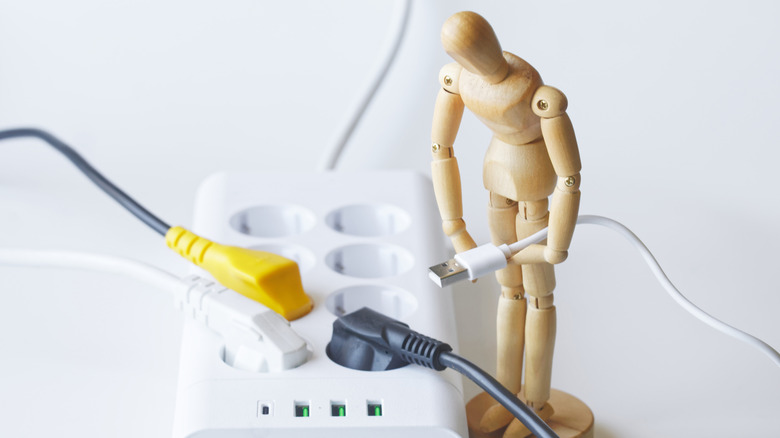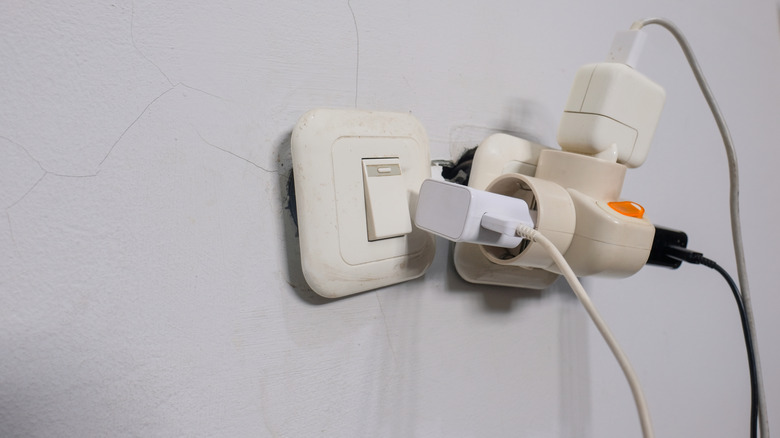Why You Should Consider Upgrading To A Smart Power Strip For Your Home
There are vampires in your house, but they aren't sucking blood. However, they are sucking money out of your wallet without your knowledge. "Vampire energy" is the electricity used by smart devices that are on, even when you're not using them. This power consumption can amount to up to 10% of your electricity use, which the U.S. Department of Energy estimates can cost you as much as $100 a year. If your electric bill is already through the roof, a smart power strip can cut your costs considerably by turning off devices that you don't really need to be running 24/7.
There are two types of devices that consume energy even when turned off. "Standby power" users such as TVs or game consoles use sensors to detect when you press the "on" button. They're already on, but they're not doing anything other than sensing. Similarly, smart dehumidifiers and air conditioners might run sensors that measure the humidity or temperature in the atmosphere, even when they're off. Any internet-connected device or any device that uses an app is monitoring your wifi. And if your wifi and router are always on, even when you're not home, they're using energy you could otherwise turn off.
Worse offenders are "no-load" power users, like battery chargers. These devices consume power even when they're not charging the battery to your phone, laptop, electric toothbrush, or any other rechargeable device. This is because the charger constantly converts the energy coming in to your home into the electricity that batteries store. A smart power strip mediates the energy wasted by both these no-load and standby electronics by cutting off your device's power supply without having to unplug it. Using one can conserve energy, as well as costs on your electric bill.
What not to plug into a smart power strip
While power strips work great for some devices, others should never be plugged into a power strip of any kind, including power strips with surge protectors. The first type of electronics to keep away from your power strip are those that draw a lot of electricity, either at startup or all the time they are running. For example, air conditioners, refrigerators, electric stoves, clothes dryers, space heaters, and dishwashers should be plugged directly into a wall outlet or wired directly to your electrical panel. The same goes for power tools like shop lights or circular saws. While the average power strip can handle a maximum of between 1800 and 2400 watts, these devices draw more power than a strip can handle, especially when used in combination. To avoid tripping your circuit breakers and causing damage to your home's electric, devices of these kind shouldn't be plugged into extension cords, power strips, or surge protectors of any kind.
The second type of device that should be left off the power strip is one that uses no power when it's turned off. Since a smart power strip itself uses a small amount of electricity to monitor the devices plugged into it, you're in fact wasting some energy by using it on items like lamps, clocks, radios, fans, or simple coffee makers. If the device itself isn't "smart," it's counter-productive to plug it into a smart power strip. Just use a standard strip for these electronics if you need the extra outlets.

